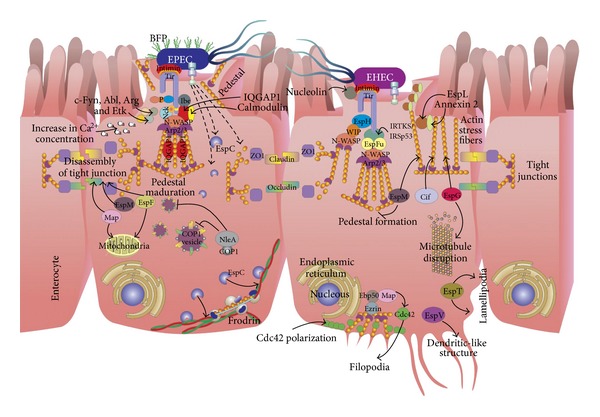Figure 2.

Models of actin cytoskeleton manipulation by enteropathogenic E. coli (EPEC) and enterohemorrhagic E. coli (EHEC). EPEC and EHEC are attaching and effacing (A/E) pathogens that destroy the microvilli and subvert host cell actin to form pedestals beneath the attachment site. EPEC attaches to the small bowel through the bundle-forming pilus (BFP), forming localized adhesions. Using the type III secretion system, a large repertoire of effector proteins is injected into the host cell. Intimate attachment is mediated by the interaction between the translocated intimin receptor (Tir) and intimin, an adhesin. Tir is phosphorylated by host tyrosine kinases, and phosphorylated Tir recruits Nck, which activates neural Wiskott-Aldrich syndrome protein (N-WASP) and the actin-related protein 2/3 (Arp2/3) complex to mediate actin rearrangements and pedestal formation. Whereas, the mechanism of pedestal formation by EHEC is slightly different from that used by EPEC. Tir is not phosphorylated, and pedestal formation is Nck-independent, but it is mediated by Tir cytoskeleton-coupling protein (EspFu; also known as TccP), which is linked to Tir through the host protein insulin receptor tyrosine kinase substrate (IRTKS) and interacts with N-WASP to activate the Arp2/3 complex. EHEC injects many of the same effectors as EPEC into the host cell to manipulate host processes (for full details, see main text).
